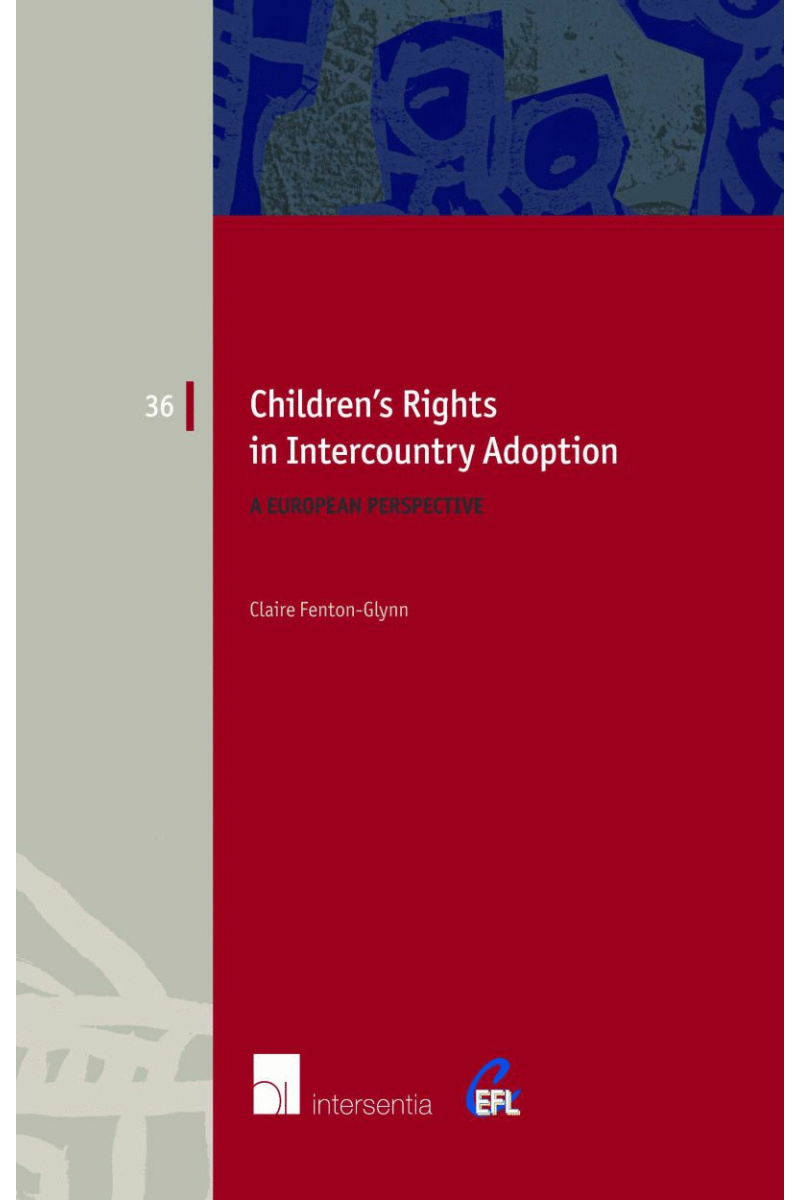 maestro
mastercard
visa
maestro
mastercard
visa

Children's Rights in Intercountry Adoption
A European Perspective

Inner Temple New Author's Prize 2015
Winner of the Cambridge Law Faculty’s Yorke Prize 2015
Cited by the Court of Appeal in N (Children) (Adoption: Jurisdiction) [2014] EWFC 45
European jurisdictions play a central role in intercountry adoption, both as countries of origin for children being placed, and as receiving countries. In 2010, 50 per cent of all children involved in intercountry adoption worldwide were sent to countries within Europe, while three European states – France, Spain and Italy – have been in the top five receiving states in the world for the past 15 years. In addition, of the approximately 30,000 children involved in intercountry adoption per year worldwide, around one-third come from European jurisdictions.
The question that this book aims to answer is very simple: how can we best protect the rights of these children?
Using the United Nations Convention on the Rights of the Child and the Hague Convention on Protection of Children and Co-operation in Respect of Intercountry Adoption as the foundation for analysis, this book provides an examination of the application of children’s rights in the field of intercountry adoption. It uses European jurisdictions as examples of both good and bad practice in order to illustrate the issues that arise in the practical implementation of these principles. In doing so, the book proposes normative guidelines within which intercountry adoption can be effected in a manner that protects the rights of children in Europe.
This book argues that children involved in intercountry adoption should be afforded the same safeguards, the same protection, as children in domestic placements, in a system that focuses on the welfare of the child as the paramount consideration.
The book covers in detail the following issues:
-the place of intercountry adoption within the domestic system
-the applicability of intercountry adoption as a child protection mechanism, and the impact it can have on other forms of alternative care
-the conditions for parental consent to intercountry adoption; including the identity of those who must give consent, and how it can be dispensed with
-the mechanisms used to prevent consent being obtained improperly, and to prevent the illegal trafficking of children
-the participation of the adopted child in the decision-making process
-the right of the child to obtain information concerning his or her biological parents
-the eligibility of prospective adopters
-the support necessary for a successful adoptive placement
About this book
‘[The book] takes a high-level view at how international adoption works and its consequences. […] This book should be compulsory reading for anyone involved in the creation of, of lobbying for, or research into, adoption law. But that is not to say it has no value to the practitioner. The book is filled with interesting insights into how adoption is practiced throughout the EU, as well as Russia, Ukraine and the US.’
Ruth Cabeza in [2015] 2 International Family Law
‘[...] a highly informative analysis of the regulation and practice of intercountry adoption in Europe. Fenton-Glynn's work is well written, analytical and admirably concise for the scope of material it covers. It is an extremely valuable and timely contribution.’
Maebh Harding in Child and Family Law Quarterly 2017
| Type of product | Book |
|---|---|
| Format | Paperback |
| EAN / ISSN | 9781780682280 / 9781780684925 |
| Series name | European Family Law |
| Weight | 440 g |
| Status | Available |
| Number of pages | xvi |
| Access to exercice | No |
| Publisher | Intersentia |
| Language | English |
| Publication Date | Oct 15, 2014 |
| Available on Strada Belgique | No |
| Available on Strada Europe | No |
| Available on Strada Luxembourg | No |
Downloads
- Table of Contents
- Chapter 1. Introduction
- Chapter 2. Combating Abuses: International and Regional Regulation
- Chapter 3. Intercountry Adoption and the Domestic Child Welfare System: The Principle of Subsidiarity
- Chapter 4. Consenting Adults: Giving and Receiving Consent to Adoption
- Chapter 5. Buying Babies: The Inducement of Consent
- Chapter 6. Compulsory Adoption: Adoption Without Consent
- Chapter 7. Child Participation: Autonomy and Protection
- Chapter 8. Adoptive Parents: Eligibility, Preparation, and Support
- Chapter 9. Who Am I? The Child’s Right to Identity
- Chapter 10. Conclusion
- List of Legislation
- Literature
- Index